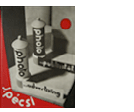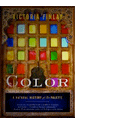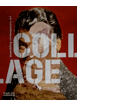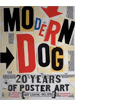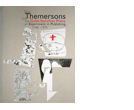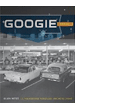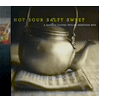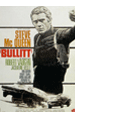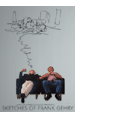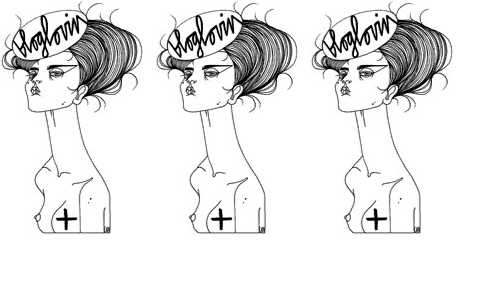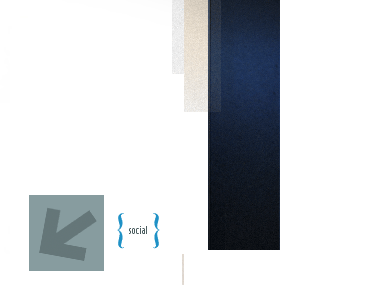Sacramento’s Saul Bass sculpture
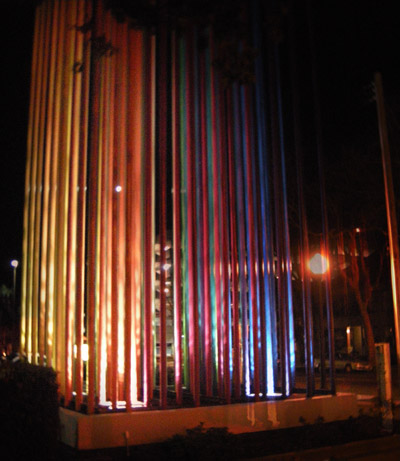
Originally published November 2006 in Etcetera, the newsletter of the Sacramento Art Directors and Artists Club
By Michael Kennedy
The next time you drive by the corner of 16th and Q streets, you’ll see that one of Sacramento’s first public art sculptures looks much brighter.
The Fuller Paints Pole sculpture just got a fresh coat of new paint. The structure consists of 81 poles painted in 32 hues and set in a 9 x 9 grid. Credit for the sculpture goes to international design legend Saul Bass, whose firm in the early 1960s developed the poles as part of an identity campaign for Fuller O’Brien Paint.
In 1990, Saul Bass was a guest speaker at ADAC’s Envision Design Conference and had a chance see the pole sculpture up close for the first time.
The colorful structure sits in the corner of the parking lot in front of what was originally the Fuller Paint store and later became the ICI Paint store. The building has sat vacant for more than a year and the color of the poles had faded over the years. This past summer an article appeared in The Sacramento Bee about the poles and raised questions about the sculpture’s future.
The owners of the property, the Evergreen Co., recently painted the 81 poles, restoring the full spectrum of colors once again. The property and building is still available for lease and there are no plans to remove the sculpture, though that could change if a buyer does not perceive the structure to be an asset.
Unfortunately, the poles are not protected as public art because they sit on private property and they were created as a commercial project. The structure also has to be on the site for more than 50 years.
enter: dick hastings
Over the years, Saul Bass was given credit for designing the unique Fuller Pole sculpture in Sacramento. But as it turns out, this isn’t totally true. Here’s the rest of the story:
Saul Bass was one of the nation’s leading graphic designers from 1960 to 1990. He became famous for some of his logo designs for numerous national companies including Quaker Oats, Girl Scouts of America, AT&T, United Way and United Airlines. Bass was also known for his design of film titles, including Alfred Hitchcock’s Vertigo and Psycho. Saul Bass also directed the famous shower scene in the movie Psycho.
Bass’ firm was one of the leading designstudios in Los Angeles inthe early 1960s and one of his national clients at that time was the Fuller O’Brien Paint Company. His firm was responsible for the development of a new logo and national identity campaign for the company. Occasionally, Bass would subcontract out 3D projects to his good friend Herb Rosenthal, who had a small firm also located in Los Angeles. One of the projects Bass asked Rosenthal to work on was to create two sculpture pieces for the new Fuller campaign. Herb asked one of his designers, Dick Hastings, to help develop some ideas.
For inspiration, Hastings turned to someconcepts he had worked on forthe World’s Fair in New York in 1960. One design was a 3D model consisting of colorful poles that were used as an out-of-focus background for concept photos to help visualize sections of the Fair. Dick took that idea and developed it into the Fuller pole sculpture using 81 steel poles, each one with a subtle change of color. Originally, the pole structure was designed to be freestanding so the poles would move with the wind. The design turned out to be too costly, however, so a steel grid was attached to the top, restraining the poles from movement. The Fuller Paint Company approved this design concept and chose to have it installed at its store in Sacramento.
A second sculpture was developed for a store in Southern California that consisted of three poles with color fins that stair stepped down from top to bottom similar to a spiral staircase. The poles rotated and created a vivid display of moving colors. Dick said they eventually had to stop the poles from rotating because it caused too many fender benders in the parking lot caused by drivers staring at the dramatic images. It’s possible that both structures were part of larger campaign presented by Saul Bass to Fuller as a national campaign. Hastings believed the designs would have been recreated at Fuller stores throughout the country, but that never happened. The pole sculpture in Sacramento turned out to be the only one of its kind.
Hastings worked on another famous project for Saul Bass. It involved creating a model of the Bates’ house for the Hitchcock classic movie, Psycho. The model house was used to help visualize camera angles for filming. The real house still sits on top of the hill at Universal Studio’s back lot.
In 1965, Dick Hastings and his wife left Los Angeles and moved to Davis to attend UC Davis. He received his degree in Archeology and became Sacramento’s first preservationist in 1975, two years after Sacramento’s Alhambra Theater was torn down. Dick was director of the Preservation Review Board and served on the board for twenty years. Saul Bass died in 1996, the year after Hastings retired from the Preservation Review Board.
Dick said he last saw the pole sculpture in Sacramento about four or five years ago. He was glad to hear it had been repainted, even if the colors have been reduced from the original design.
For over two decades Dick Hastings has helped saved many historical structures in Sacramento. It’s ironic that he helped create one of the city’s first public art sculptures and yet has little control over its future because the sculpture sits on private property. For now though the Fuller Poles are still standing tall at 16th and Q streets with a fresh coat of paint. It’s worth driving by to see some of Sacramento’s design history, created over forty years ago.
Michael Kennedy is a past president and board member of ADAC and has served as an advisor for many years. He has actively participated in several areas of the club and was part of the small group which was instrumental in the creation of ADAC’s Envision Design Conference, the second longest running design conference in the United States. In 1985, Michael opened Michael Kennedy Associates, a graphic design firm specializing in graphic design, product development, marketing and consulting.
Photo by mehallo






























